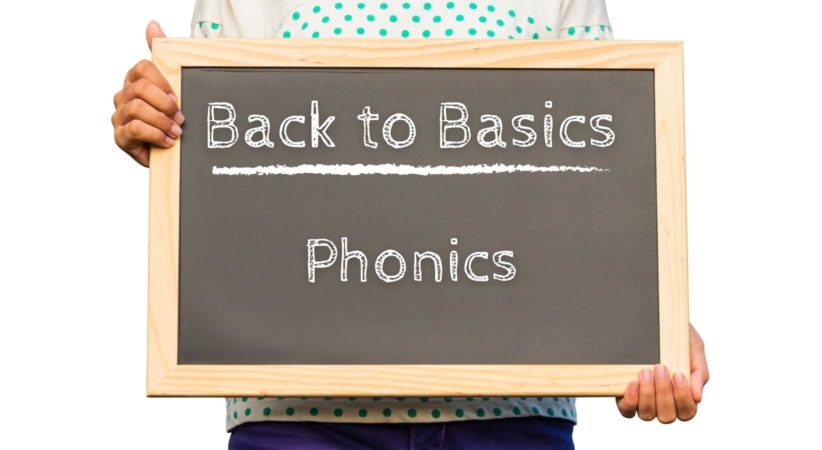
Back to Basics: Phonics
Welcome to our new Back to Basics series! In this series we will be exploring some of the foundational methods, practices and terminology for teaching reading. This series is for those new to the field of literacy, beginning tutors or those who would just like a refresher. This week we are discussing phonics.
“Phonics involves the relationship between sounds and their spellings. The goal of phonics instruction is to teach students the most common sound-spelling relationships so that they can decode, or sound out, words.” – Scholastic
The word phonics is derived from the Greek word phone meaning sound or voice. Phonics is a method of teaching reading, pronunciation and spelling that connects the written letters and words to the sounds heard when the word is pronounced. Phonics is not taught in isolation. Instead, it is paired with other decoding skills.
“Decoding is the ability to apply your knowledge of letter-sound relationships, including knowledge of letter patterns, to correctly pronounce written words.” – Reading Rockets
Phonics instruction is very closely tied to phonemic awareness. Phonemic awareness is the ability to hear and manipulate individual speech sounds, called phonemes, in spoken words. Phonemic awareness is necessary for effective phonics instruction.
Phonemes
A phoneme is the smallest unit of sound. Sometimes a phoneme is simply a single letter, but in most cases there are many ways of expressing phonemes in English spelling. There are 44 phonemes in the English language, but we only have 26 letters.
Graphemes
A grapheme is the smallest unit of a written language. It is a symbol used to identify a phoneme. It can be a letter or group of letters representing the sound. Phonemes can be spelled with different graphemes. For example, the hard “c” sound can be spelled with a “c,” a “k,” or a “ck” grapheme.
This video from Oxford Education helps to explain these concepts further:
Teaching students to blend the sounds of letters together helps them decode unfamiliar or unknown words by successfully sounding them out. A phonics teaching strategy can be used with children, adults and English language learners.
There is much more to learn about teaching using phonics. Below is a selection of resources to help. Titles with an * are available to borrow from the Decoda library.
For adults
- Handout: Teaching Phonics
- Phonics Prep!
- *Phonics they use : words for reading and writing (can be adapted for adults)
- Post-16 Phonics Approaches: A Toolkit
- *Steck-Vaughn fundamental skills for reading: phonics literacy
For children
- *Making sense of phonics : the hows and whys (can be adapted for adults)
- Phonics: Introduction
- Understanding Phonics
- What is phonics?
For ELL students
- How to Teach ESL Pronunciation and Phonics
- *What’s next? : a multilevel phonics approach for ESL students : introductory book 1
Note: phonics may not be suitable for learners with auditory processing difficulties or hearing loss.
Related Blog Posts
Burnaby’s Award-Winning LINC Program
We are pleased to welcome Linda Peteherych as our guest blogger. Linda is a LINC Literacy instructor and the Literacy Lead for Burnaby School District’s LINC Program. Today she shares …
Order of Adjectives
When there’s more than one adjective before a noun, which one comes first? Do you know why?
Back to Basics: Freewriting
Welcome to our Back to Basics series! This week we discuss the exercise of freewriting.
